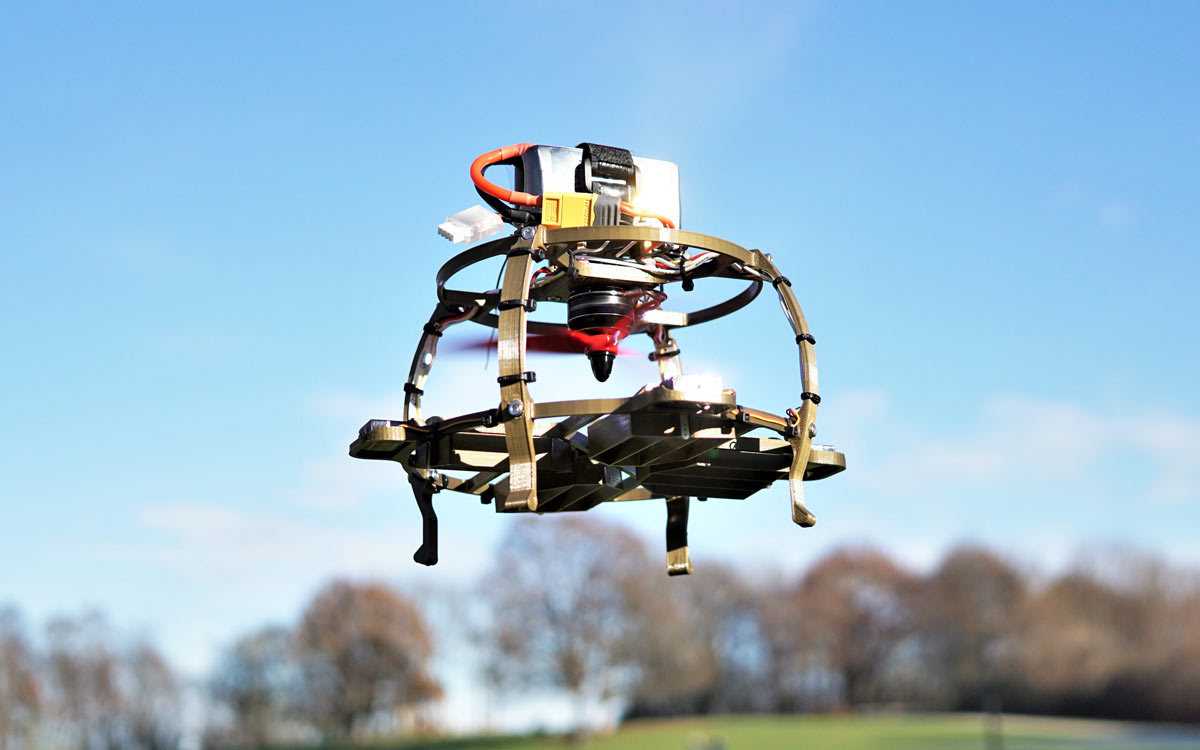

The Ball Drone Project Mk II is a great way to get into single-rotor drone experimentation. It’s an extraordinary drone design, totally different from the widespread multirotor aircraft — lets you really think outside the box.
This project shows a complete 3D-designed and -printed single-rotor drone. The self-made, 7″-round aircraft flies with a single rotor and steers with thrust-vectoring vanes. It uses common R/C components like radio receiver, LiPo battery, ESC, brushless motor, propeller, and servos. In addition, the commercial flight controller runs Betaflight, a popular free software option for drone racing.

Take a closer look at the four thrust vectoring vanes to fully understand how this thing is working. Four mini servos twist these vanes to direct the thrust, totally unlike your normal multi-rotor drone. It’s a great learning experience and will surely generate excitement when you show it off to noobs and experienced drone pilots alike (Figure A).
I first published this project on Hackaday.io, as a complete remake of my earlier ball-drone project. The first version proved the concept, but I made it just too hard, building and programming my own controller from scratch. This new version is still a somewhat advanced project — skills (and tools) are needed in 3D printing, soldering, programming, and even drone flying — but this time it uses off-the-shelf R/C components and proven flight software that’s free.
Anyone can build this Ball Drone. Learning to fly it is a whole new challenge!


